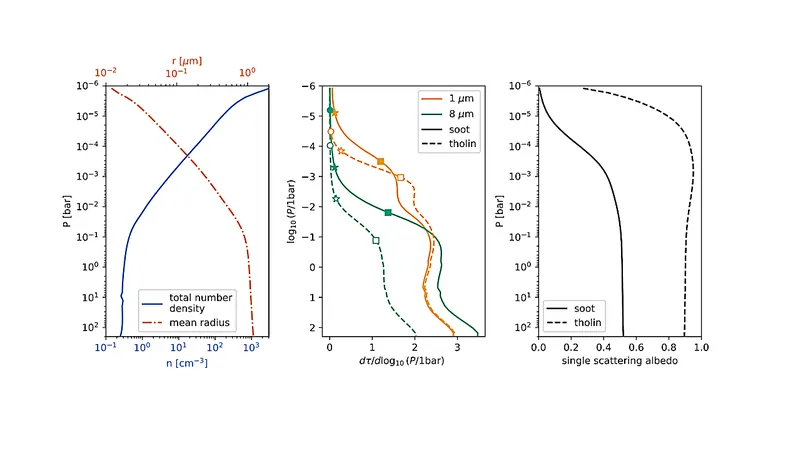
Unveiling the Mysteries of Sub-Neptunes: How Hazy Atmospheres Navigate Planetary Composition
2025-03-31
Author: Sarah
For astrophysicists, measuring the atmospheric composition of hazy sub-Neptunes like GJ 1214 b poses significant challenges. The primary difficulty lies in the degeneracy between the mean molecular weight (MMW) of the atmosphere and its haziness, making it hard to draw definitive conclusions from traditional methods like transmission spectroscopy.
Recent studies suggest that observing phase curves—the variation of brightness of the planet as it orbits its star—could help break this degeneracy. The connection between mean molecular weight and phase curve amplitude indicates that such observations could provide clearer insights. However, the presence of photochemical hazes complicates this relationship by influencing phase curve amplitudes as well.
To investigate this, researchers conducted extensive General Circulation Model (GCM) simulations of GJ 1214 b, incorporating various atmospheric compositions and types of photochemical hazes. Remarkably, these simulations revealed that photochemical hazes can induce temperature variations of up to 200 K, leading to thermal inversions and cooling in deeper atmospheric layers. These changes result in increased phase curve amplitudes and introduce significant variability into the relationship between phase curve amplitude and metallicity, making predictions even more complex.
One intriguing finding is that when haze production is sufficiently high to alter the phase curve significantly, the spectrum observed during a secondary eclipse—when the planet passes behind its star—might reflect either emission features or notably muted absorption features. This unique combination of a white-light phase curve alongside a secondary eclipse spectrum allows scientists to differentiate between hazy atmospheres with lower MMW and clearer atmospheres with higher MMW.
Understanding the implications of these findings is vital for the future of exoplanet studies. As telescopes become increasingly sophisticated, instruments capable of capturing these nuances will enhance our comprehension of the atmospheres surrounding distant worlds, shedding light on their potential habitability and composition.
This research underscores the importance of developing robust methodologies for studying exoplanet atmospheres and highlights the potential roles of photochemical processes and haze in determining planetary characteristics. Future observations, particularly with instruments like the James Webb Space Telescope, may finally provide the detailed data needed to unravel these atmospheric mysteries.
Stay tuned for more groundbreaking discoveries in the search for alien worlds!



 Brasil (PT)
Brasil (PT)
 Canada (EN)
Canada (EN)
 Chile (ES)
Chile (ES)
 Česko (CS)
Česko (CS)
 대한민국 (KO)
대한민국 (KO)
 España (ES)
España (ES)
 France (FR)
France (FR)
 Hong Kong (EN)
Hong Kong (EN)
 Italia (IT)
Italia (IT)
 日本 (JA)
日本 (JA)
 Magyarország (HU)
Magyarország (HU)
 Norge (NO)
Norge (NO)
 Polska (PL)
Polska (PL)
 Schweiz (DE)
Schweiz (DE)
 Singapore (EN)
Singapore (EN)
 Sverige (SV)
Sverige (SV)
 Suomi (FI)
Suomi (FI)
 Türkiye (TR)
Türkiye (TR)
 الإمارات العربية المتحدة (AR)
الإمارات العربية المتحدة (AR)